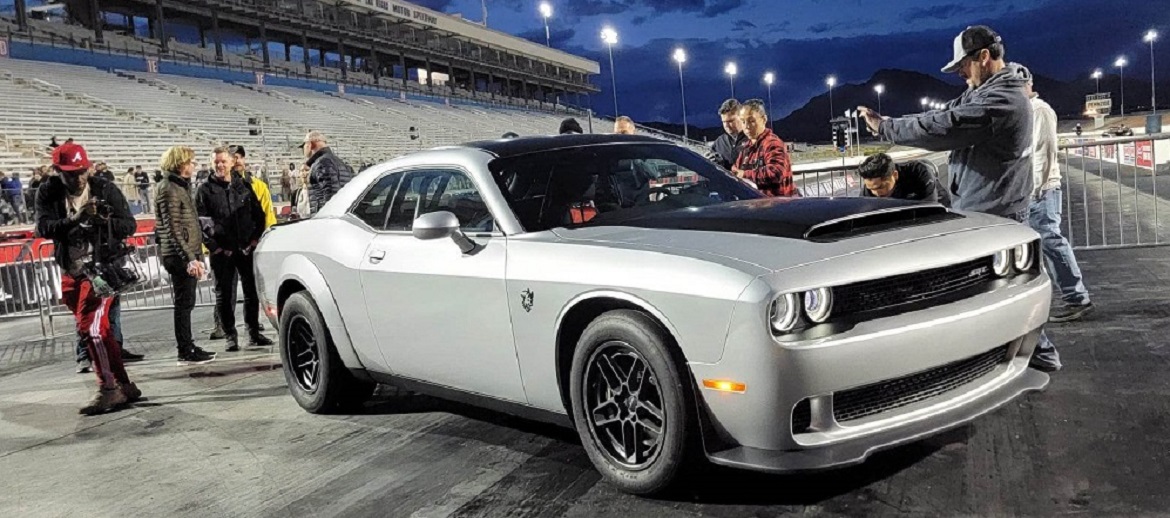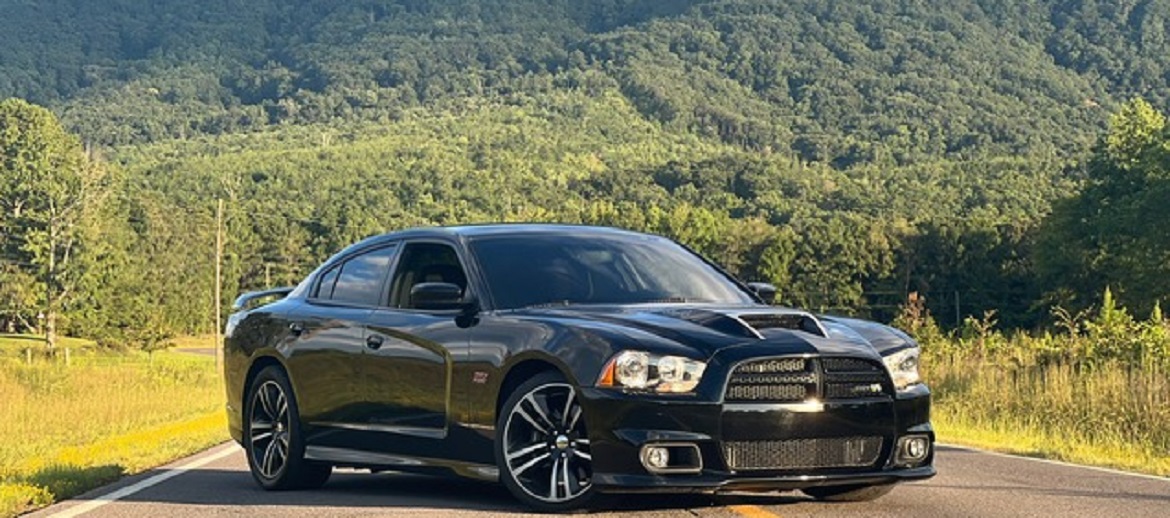Dodge Challenger SRT® Demon 170, the Greatest Muscle Car Ever
2 years ago Reviews
On the evening of Monday, March 20th at The Strip at Las Motor Speedway, Tim Kuniskis introduced the world to the 2023 Dodge Challenger SRT® Demon 170. It is designed to run on premium gasoline or just about any ethanol blend, delivering 1,025 horsepower and 945 lb-ft of torque when running on E85. That makes it the most powerful American production car ever and the first production vehicle with a combustion engine to deliver more than 1,000 horsepower.
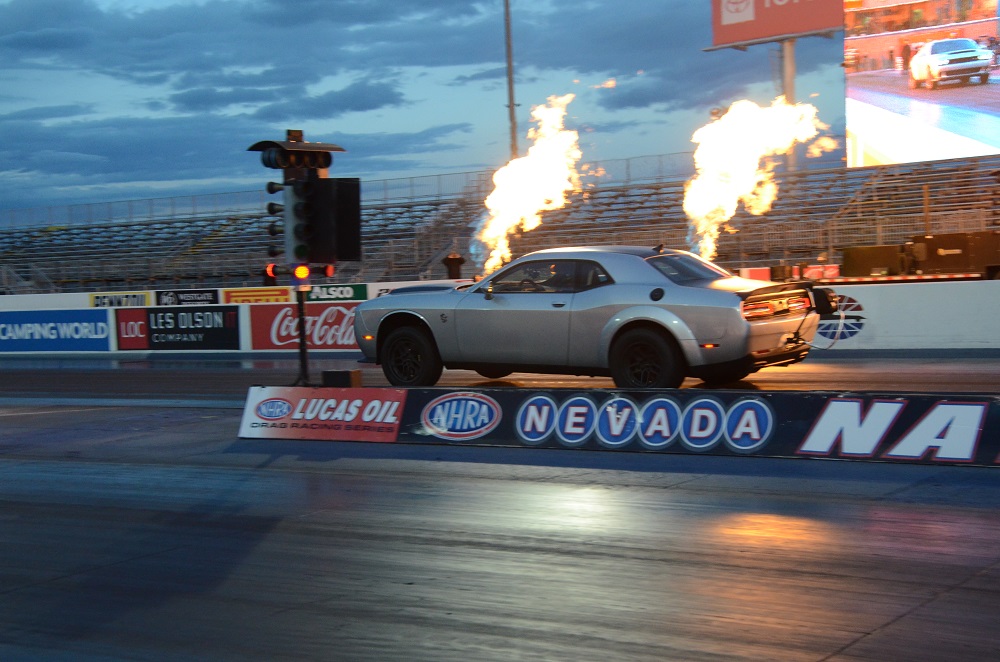
With the ability to sprint from a stop to 60 miles per hour in just 1.66 seconds with rollout and a stock, NHRA-certified quarter-mile time of 8.91 at 151.17 miles per hour, it is the quickest production car in the world. It is so quick that to go racing at most tracks, owners will need a parachute to meet NHRA regulations, which will be offered through Direct Connection.
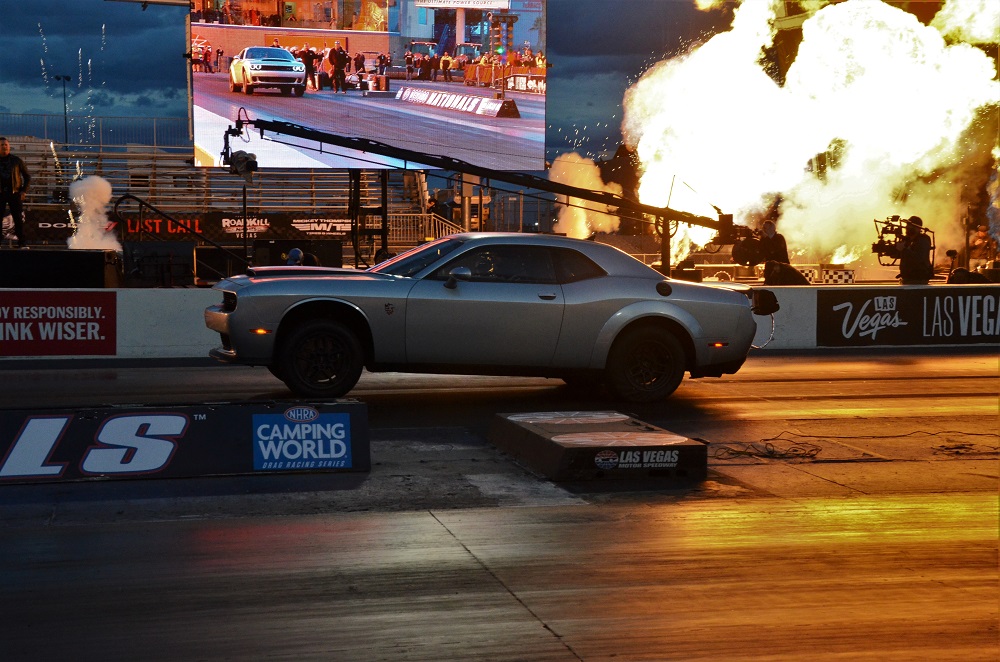
More importantly, in being the quickest production car to storm down the quarter-mile, the 2023 Dodge Challenger SRT Demon 170 is the best at what muscle cars do the most – making it the greatest muscle car that the world has ever seen. Today, we bring you a closer look at the performance numbers and break down how the latest supercharged Dodge muscle car makes such incredible power and gets down the track so quickly.
World-Class Power and Performance
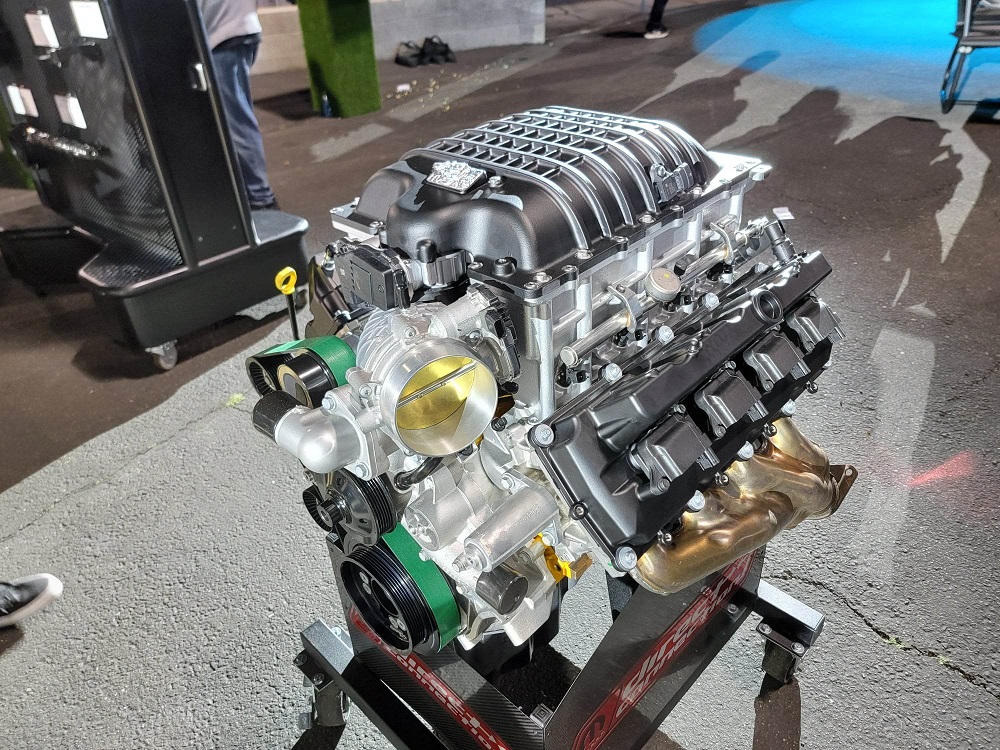
As mentioned above, the 2023 Dodge Challenger SRT Demon 170 offers 1,025 horsepower and 945 lb-ft of torque via a supercharged 6.2-liter V8. The only real production car sold in the United States with more than 1,000 horsepower prior to the newest Dodge Challenger is the Tesla Model S Plaid with 1,020 horsepower. All other vehicles with more than1,000 horsepower come from high-end luxury brands such as McLaren, Bugatti, Koenigsegg and Rimac. They are all produced in far lower numbers than the SRT Demon 170 and they almost all have price tags closer to a million dollars – if not over that mark.
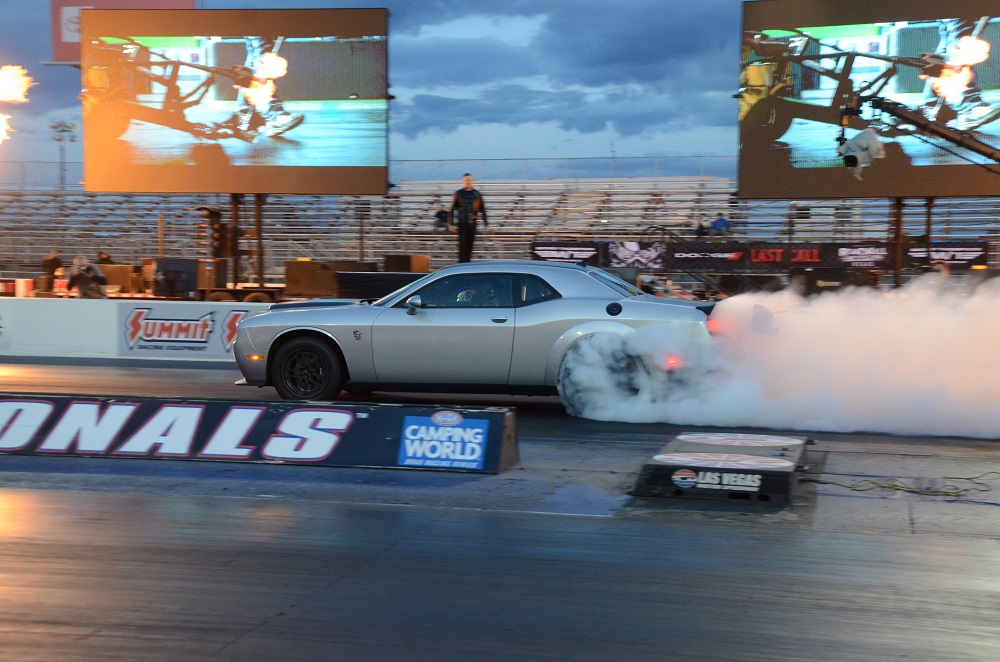
The 2023 Dodge Challenger SRT Demon 170 is the only production car in the world with more than 1,000 horsepower and an MSRP starting under $100,000, but the engineering team made sure that this muscle car can use all of that power. The result is a 0-60 time of just 1.66 seconds and an NHRA-certified quarter-mile time of 8.91 at 151.17 miles per hour. That 0-60 time and quarter-mile time come together to make the SRT Demon 170 the quickest production car in the world.
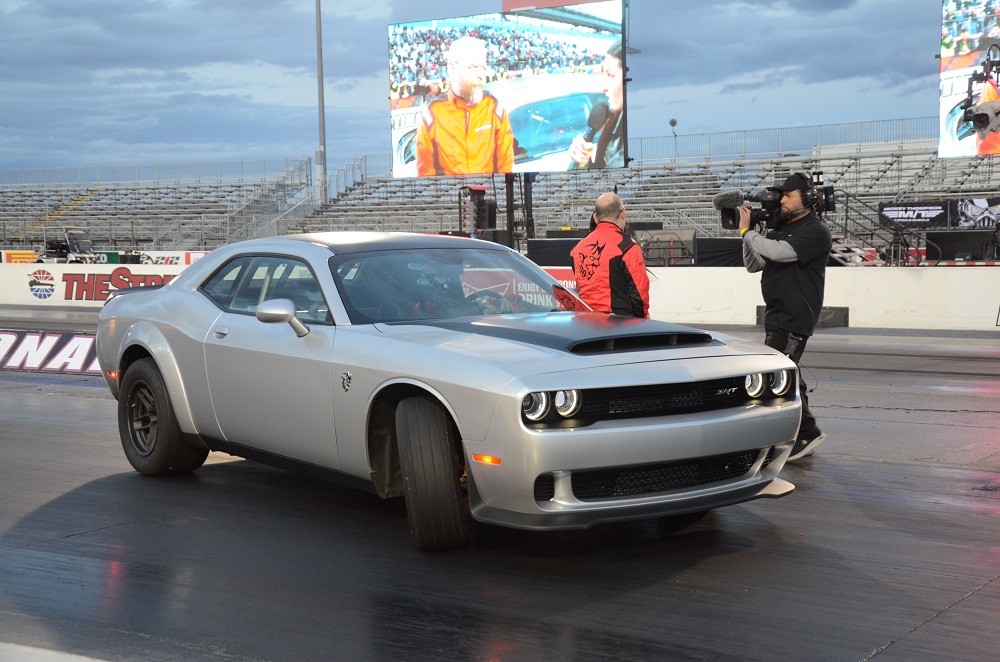
Mind you, that is not the quickest production car with an internal combustion engine – that is the quickest production car in the world. The previous record-holder for the quickest production car was the Tesla Model S Plaid, which gets to 60 in 1.98 seconds and runs the quarter-mile in the 9.20 range. That car is, of course, an all-wheel-drive electric vehicle. The 2023 Challenger SRT Demon 170 is the first production car in the world with a gasoline engine and rear-wheel-drive to get to 60 in under 2 seconds, and the only production car to run an 8-second quarter-mile. As is the case with the vehicles that can rival the Challenger SRT Demon 170 in horsepower, the few vehicles that come close in acceleration are all very low volume vehicles with price tags nearing the seven-figure range.
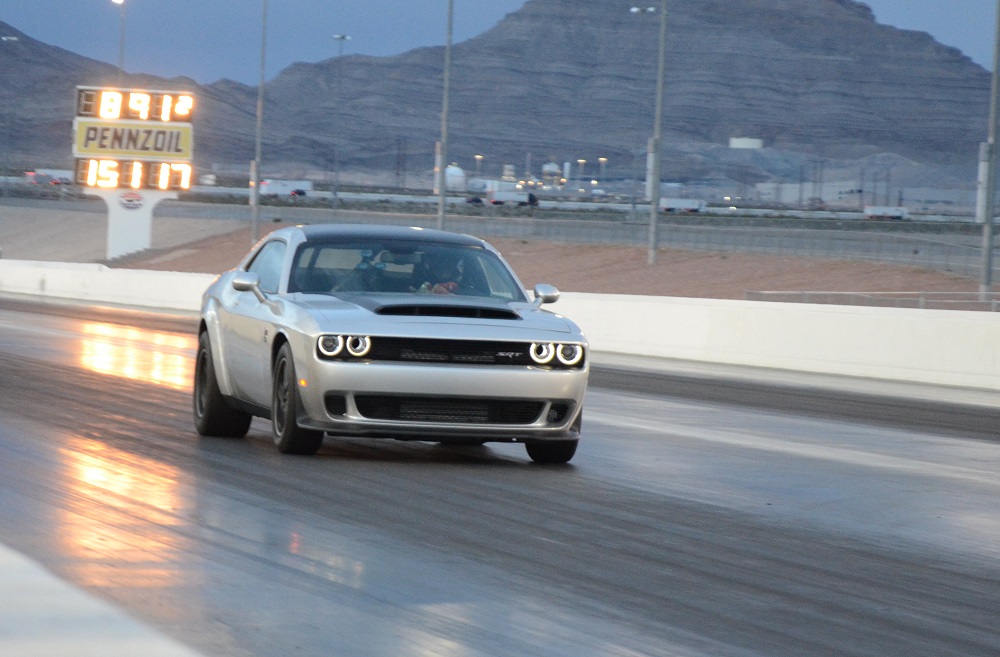
With a price starting at $96,666 (not including Gas Guzzler Tax and destination fees), the Dodge Challenger SRT Demon 170 offers more horsepower-per-dollar than any production car in the world, ever. With Chevrolet focusing on hybrid performance drivetrains for the Corvette and discontinuing the Camaro while Ford turns toward the electric future, the odds are incredibly low that cross-town rivals will ever introduce a production road-going engine that will rival the supercharged HEMI® engine in the SRT Demon 170. In other words, it will likely never be rivaled by anything with a gasoline engine and rear-wheel-drive, making it the greatest muscle car of all time.
Making 1,025 Horsepower
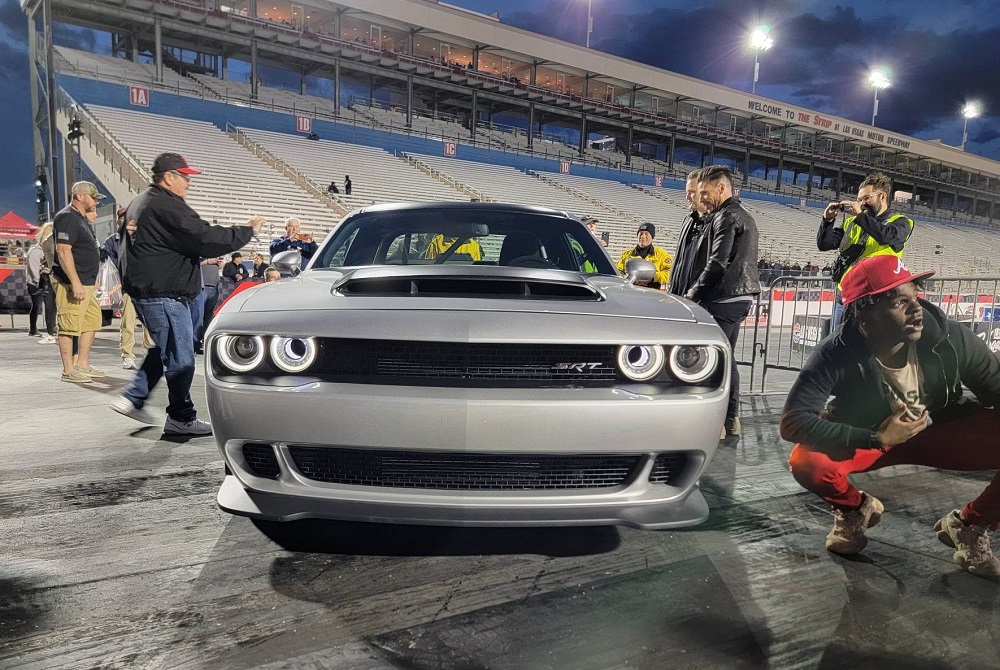
The 2023 Dodge Challenger SRT Demon 170 is powered by a supercharged 6.2-liter HEMI engine, just like the 2023 Dodge Challenger SRT Hellcat Redeye Jailbreak, but the two share almost no engine components. The SRT Demon 170 also shares almost no engine parts with the 2018 SRT Demon.
The SRT Demon 170 engine configuration starts up top with a 3.0-liter IHI supercharger, featuring a modified snout, a 105mm throttle body and a 3.02-inch pulley. This blower setup delivers 40% more boost than the Redeye, up from 15.3 psi to 21.3 psi, along with 30% more overall air flow. All of that added boost is possible thanks to the new E85-ready fuel system, which uses a fast response ethanol sensor that is integrated into the fuel rail system to provide constant monitoring of the ethanol content. Helping to get the needed amount of ethanol to the engine at peak boost is a set of fuel injectors that flow to the rate of 164 gallons per hour, which is higher than the flow rate of most shower heads. Whenever the system senses an ethanol content of at least 65%, all 1,025 horsepower is unlocked, but the SRT Demon 170 will safely run on 93-octane pump gas (E10 ethanol), with a reduction in power to 900 horsepower and 810 lb-ft of torque. The owner does not have to install a unique engine computer or even push a button to run on ethanol; the car comes from the factory ready to recognize the ethanol content and adjust the power output accordingly.
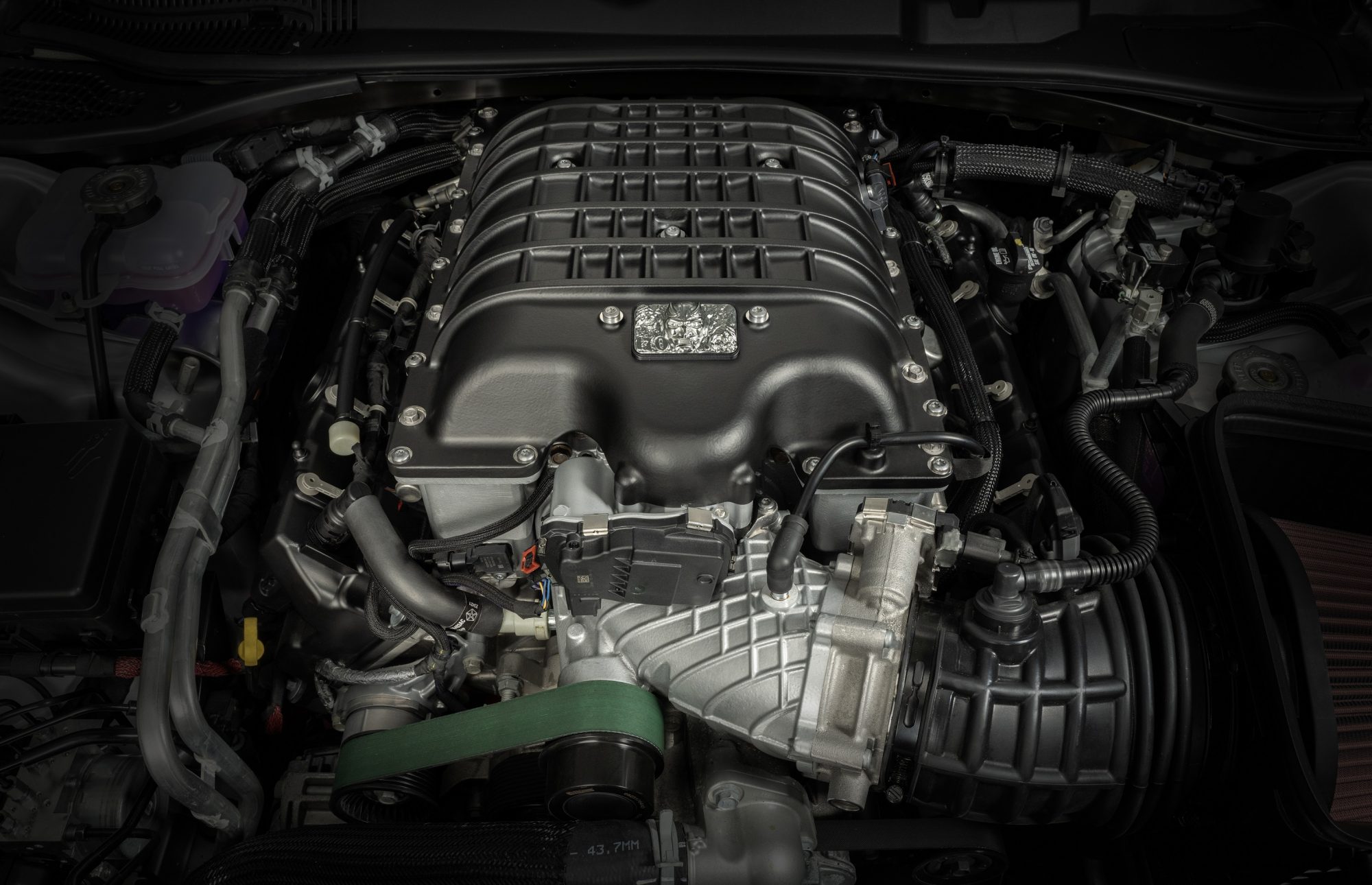
The induction and fuel systems play the biggest role in the massive power output of the new Challenger SRT Demon 170, but the Dodge engineers went to great lengths to make sure that the supercharged HEMI engine could reliably make all of that power. In doing so, they replaced or significantly upgraded every aspect of the engine internals except for the camshaft. They also incorporated the SRT Power Chiller system from the 2018 Demon and Redeye models, allowing the driver to reduce engine intake air temperatures by as much as 45 degrees by using the air conditioning system to cool the intercooler, leading to more consistent power output in hot climates.
The engine block of the SRT Demon 170 features modified machining for stronger head studs and main bearing cap bolts, with billet main caps helping to create 44% more load-clamping force than the Redeye. When operating at peak boost on E85, the SRT Demon 170 cylinders experience more than 2,500 pounds of internal pressure, up 32% from the Redeye, which is why it is so important for this new engine to have extreme levels of clamping power on both ends of the combustion process. The SRT Demon 170 also has new pistons, connecting rods, connecting rod pins and fasteners that are stronger and more durable than the already-tough items in the Redeye engine. The main bearing and rod bearings have also been upgraded to copper-lead for added load capabilities. Even the front drive system of the Dodge Challenger SRT Demon 170 has been upgraded via a fluid damper, helping to remove any torsional vibration from the monstrous HEMI engine.
On the top end of the combustion process of the newest Dodge Challenger, the aluminum cylinder heads have been fitted with unique high-strength steel inserts with the heads. This prevents the high levels of pressure from the head studs from being applied directly to the aluminum cylinders, instead distributing the load of the studs across a larger, stronger space and protecting the aluminum. The cylinder heads have also been equipped with nitride-coated intake valves, upgraded materials in the valve guides and seats, and new spark plugs for improved ethanol compatibility.
A Bulletproof Driveline for a 170-proof Challenger
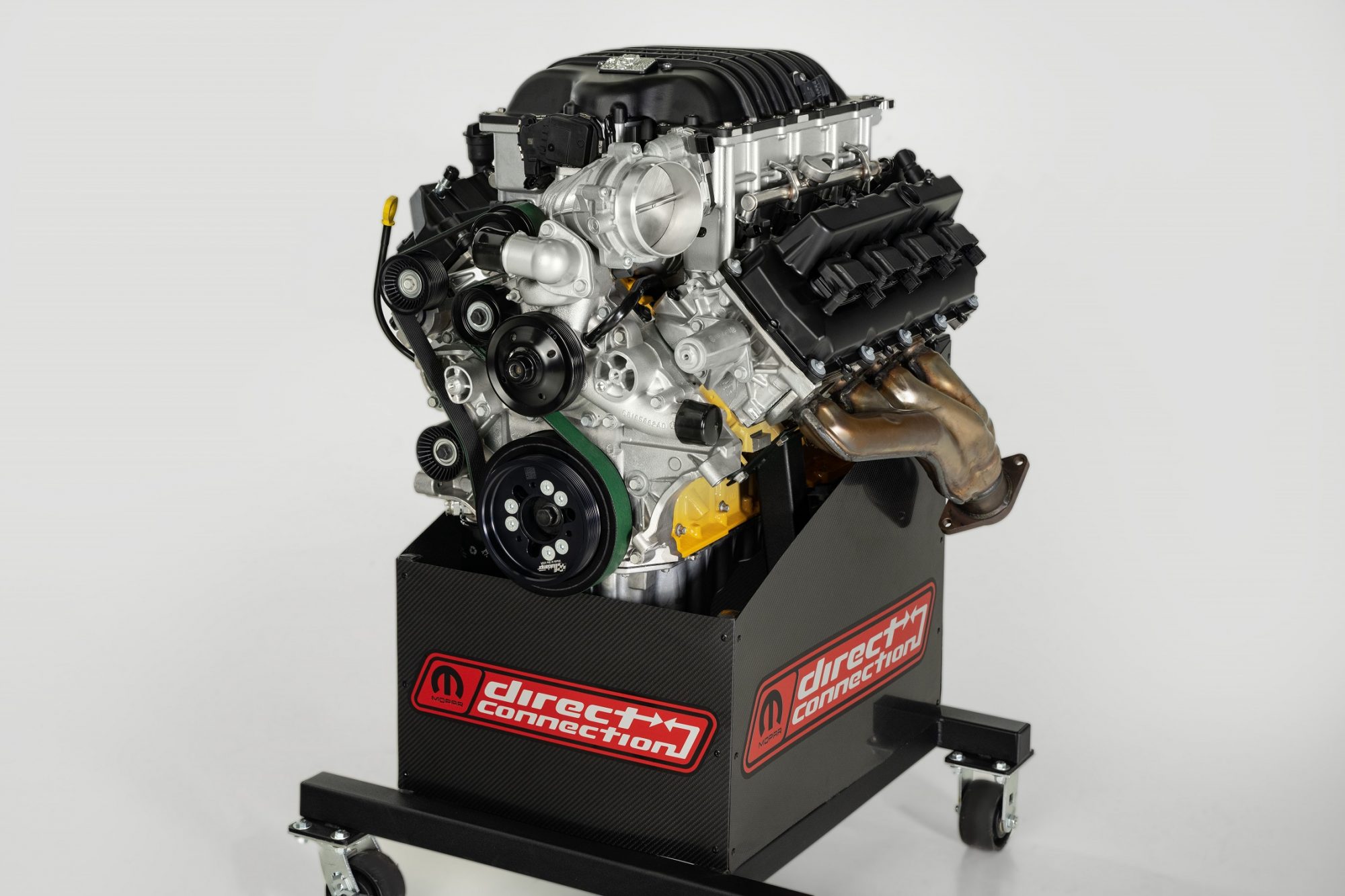
All of that power wouldn’t be much good if the Dodge Challenger SRT Demon 170 couldn’t put it all to the ground, so the team made significant changes to the entire driveline, from the transmission to the tires.
The SRT Demon 170 features the same ZF 8HP90 8-speed transmission as all modern supercharged models, but the unit in this 1,025-horsepower muscle car sports a stronger output flange to accommodate a new driveshaft. The transmission in the SRT Demon 170 also features the new TransBrake 2.0 system, which is said to be easier to use than the setup in the 2018 SRT Demon, as well as a unique, adjustable torque management system. Using the infotainment screen, racers can use this torque management adjustment system to limit the torque output at points in the run where the car is struggling with traction, effectively allowing the owner to safely make subtle tuning adjustments between runs without any sort of aftermarket device. When working with the Torque Reserve, Launch Control and Launch Assist systems, the SRT Demon 170 is far easier to get down the track than the 2018 SRT Demon, with Kuniskis going so far as to say that there is no need to peddle the car on a good track.
The new driveshaft of the Challenger SRT Demon 170 is 30% stronger than the unit in the Challenger Redeye, with a larger diameter tube, thicker tube material and larger CV joints. That heavy-duty driveshaft leads to a new differential housing that is made from first production application of Hot Isostatic Pressing in a driveline component, which increases the strength of the case by removing any porosity in the metal that naturally occurs in the casting process. When combined with the new input flange, the new geometry of the differential housing and the larger rear cover-mount fasteners, this differential is 53% stronger than the one found in the Redeye. Inside of that case is a massive 240-millimeter ring and pinion set, providing more reliability in sending 1,025 horsepower and 945 lb-ft of torque to the wheels.
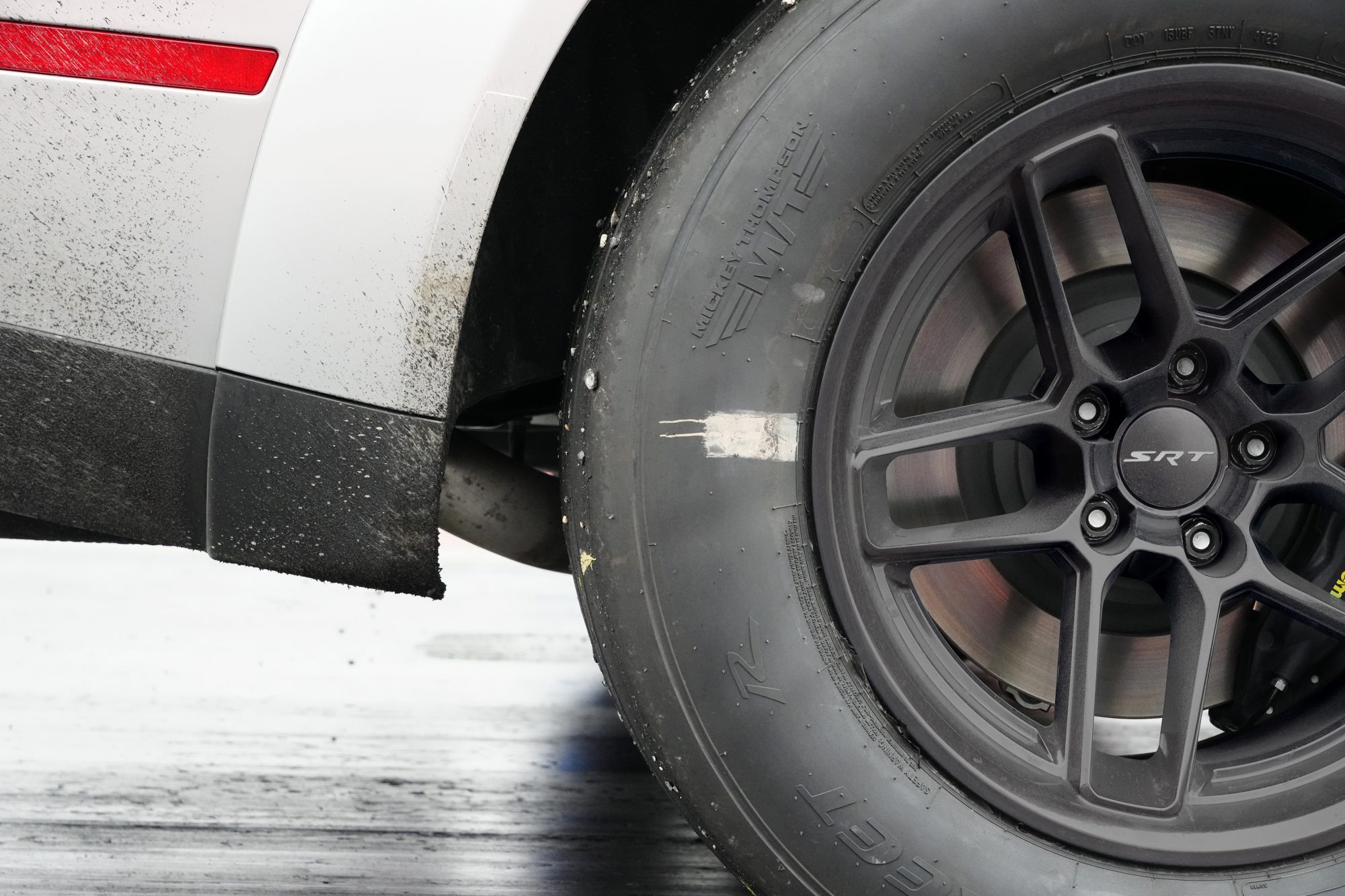
Finally, the 2023 Challenger SRT Demon 170 comes with forged aluminum alloy wheels measuring 18×8 inches up front and 17×11 inches out back, but a carbon fiber wheel option from Lacks Enterprises is offered for optimal performance. These wheels, which are comprised of an aluminum center section and a carbon fiber barrel, held together with titanium fasteners, are 20.12 pounds lighter than the wheels of a Challenger Redeye Widebody up front and 11.98 pounds lighter out back. These large-weave wheels look great and they reduce unsprung vehicle weight, effectively increasing the amount of horsepower making it to the ground. Mickey Thompson ET Street R tires with a unique compound are the best in the industry, allowing this car such incredible launch forces.
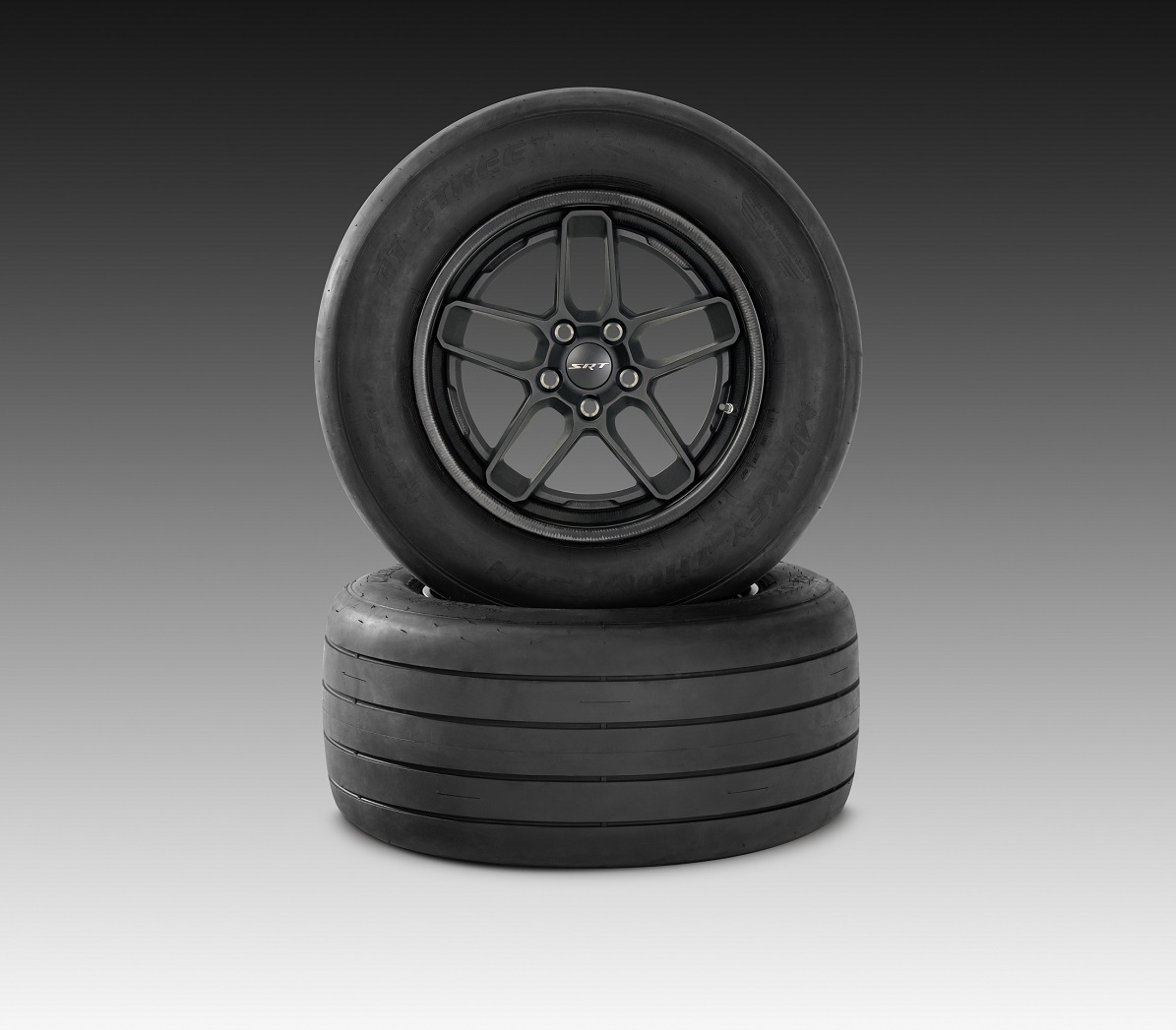
These wheels joined a long list of lightweight items such as the lightweight front brakes, hollow sway bars, the passenger and rear seat delete, the removal of the trunk noise insulation, lightweight interior carpeting, a two-speaker audio system and the removal of the front flares – all of which cuts 157 pounds from the Challenger SRT Demon 170.
To make those beefy rear tires fit under the body, the Bilstein dampers have been adjusted to provide a 10-millimeter lift in the rear while restricting rear jounce travel by 17 millimeters. The rear camber has been adjusted to provide a larger contact patch on launch, while springs that are 35% softer up front and 28% softer in the back work with sway bars that are 75% softer in the front and 44% softer out back to allow the perfect amount of weight transfer. The goal with the suspension tuning was to keep the car flatter, as doing a big wheelie actually wastes some power, but even with the adjustments to the suspension, the SRT Demon 170 still carries the front wheels even while getting to the 60-foot mark on the track in an astonishing 1.29 seconds.
A Unique, Minimalist Exterior and Interior
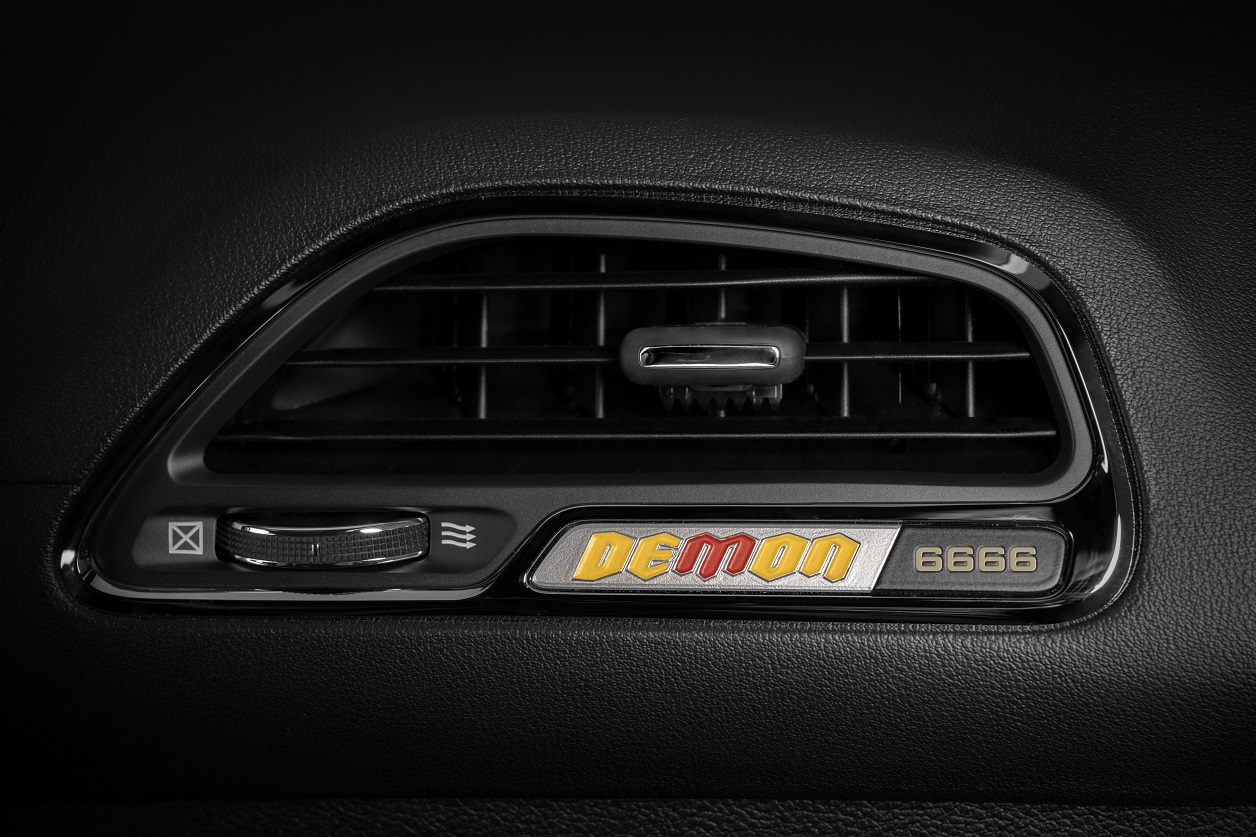
The 2023 Challenger SRT Demon 170 is the first car from Dodge to feature staggered drag radials, with Mickey Thompson P315/50R17 ET Street R drag radials out back and Mickey Thompson 245/55R18 ET Street front tires, so there was no need for a widebody design on the front, nor is there a need to swap to front racing “skinny” wheels. Removing the front flares cut 16 pounds from the car and improves aerodynamics, while creating a unique look.
The SRT Demon 170 also has a unique Demon head badge on the fender with a “170 neck tattoo”, along with the words “Alcohol Injected” on the insert of the massive hood scoop. The raised center section of the hood can be ordered in matte black, as can the roof and trunk lid, and the newer SRT Performance rear spoiler is standard.
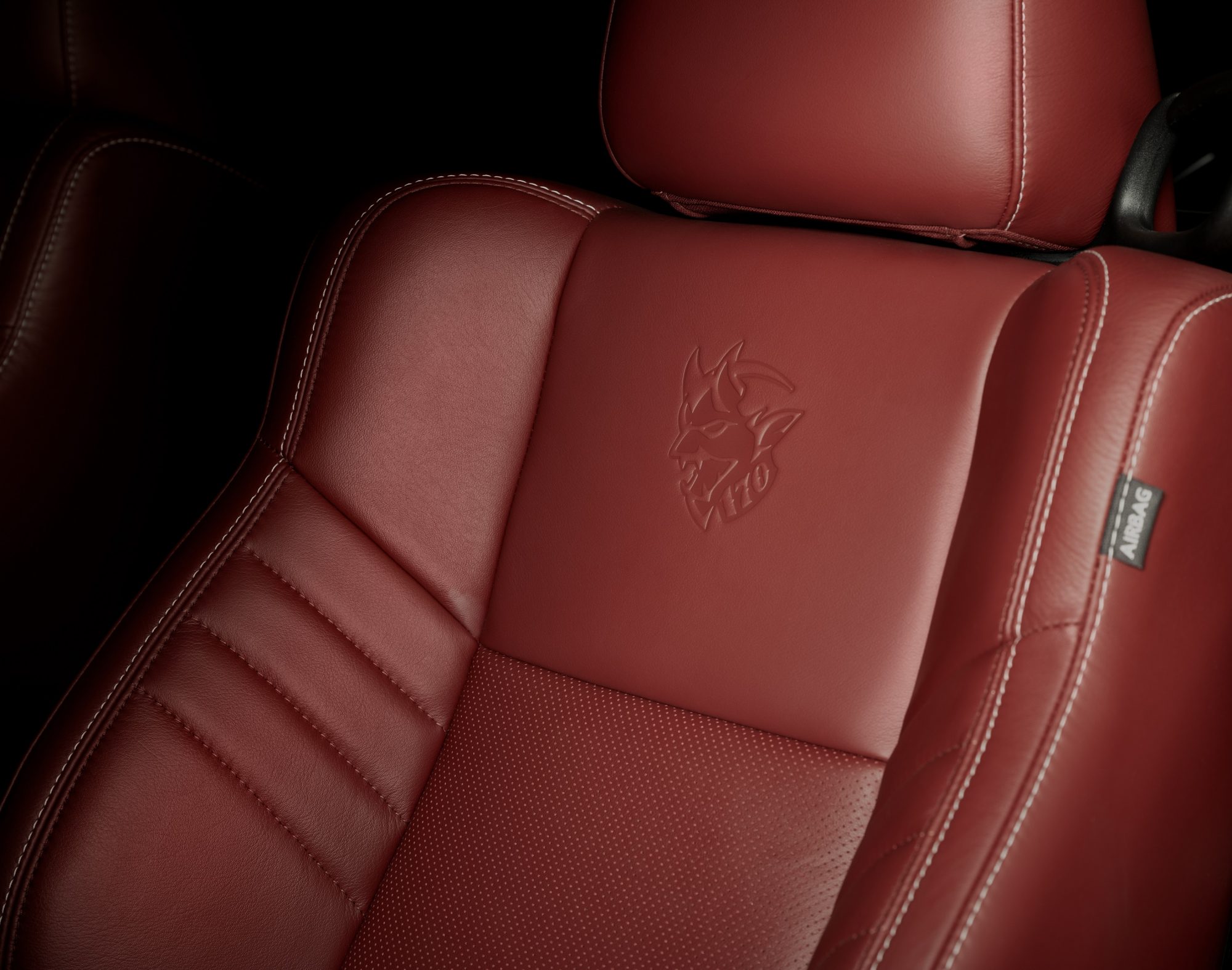
On the inside, the Challenger SRT Demon 170 can be ordered with black leather and Alcantara or Demonic Red Laguna leather, but Houndstooth cloth is standard, as is the single-seat layout. Buyers can order the car with a passenger seat and rear seat, but for those who want to keep the interior nice and light, Direct Connection is offering a new harness bar that fits with the new carbon fiber rear seat delete panel. The Demon 170 logo is displayed on the upper back portion of the front seat(s) and on the passenger’s side of the dash, the model plaque displays the Demon name and the sequence number out of the planned 3,300 units.
An Extraordinary Debut for an Extraordinary Muscle Car
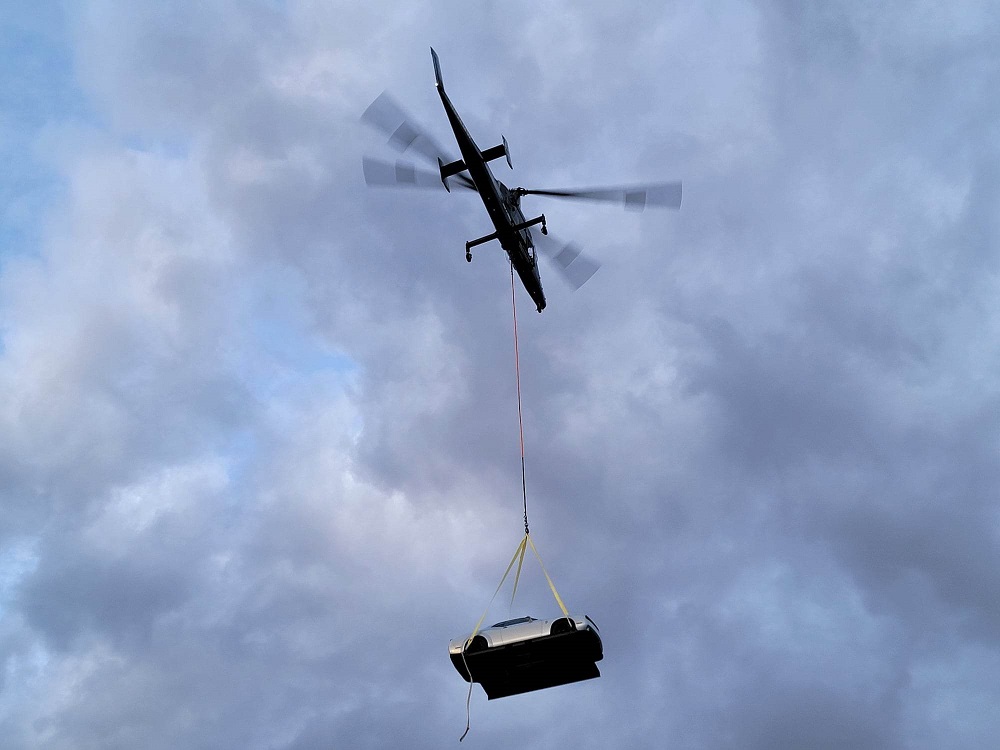
The 2023 Dodge Challenger SRT Demon 170 was introduced at the Roadkill Nights Vegas event, but Tim Kuniskis didn’t just have SRT engineer and test driver extraordinaire Jim Wilder drive out from under a unique cage – he had the car come flying in from above. After Kuniskis talked to the massive crowd at Las Vegas Motor Speedway about the brand’s performance journey over the past hundred years, a helicopter came flying in with the new SRT Demon 170 hanging below on a tiny platform and a single cord. The winds were insane at the time that the pilot maneuvered over the drag strip, causing the car to sway side to side and spin a bit, but he or she expertly set it down on the far end of the drag strip. Jim Wilder then climbed in and drove the car down to the starting line, where he prepared to make a quarter-mile pass in the 1,025-horsepower Challenger.
After a smoky burnout, Wilder launched the SRT Demon 170 hard enough to pull the front wheels off of the ground and after setting the wheels down once, they came back up for a short time for a second wheelie on one run. There was no time posted for that actual run, but they did light up the boards with the NHRA-certified record run of 8.91 at 151.17 miles per hour.
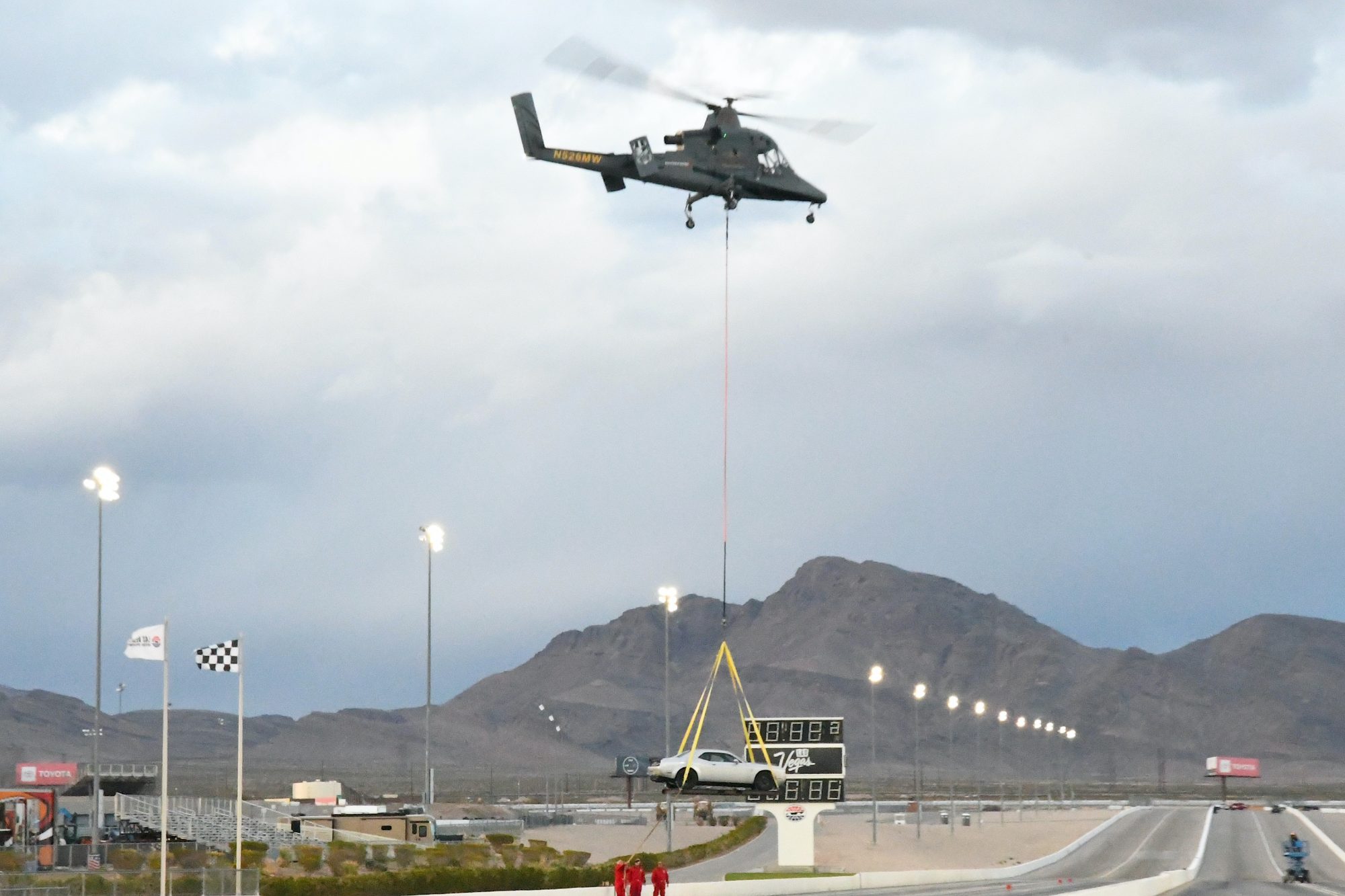
Wilder then circled back around and did a long, rolling burnout down the track before coming back to park the 2023 Dodge Challenger SRT Demon 170 at the starting line for photos. At that point, the media moved in around the car as Jay Leno posed for pictures at the driver’s door. A short time later, the SRT Demon 170 was moved out away from the starting line of the track, where the media and spectators could gather around it for closer pictures. The evening’s events were capped off by a live performance by Diplo, but for most, the main attraction was America’s most powerful production car and the world’s quickest mass production road car.
Dodge is going out of the modern era of the muscle car with a bang, like only Dodge can. On behalf of everyone who attended the Roadkill Nights Vegas event, I want to thank Tim Kuniskis and his team for an incredible event and another legendary American muscle car. There is really no better way to send off the current Dodge Challenger than with the titles of the world’s quickest production car and the most powerful muscle car ever.
